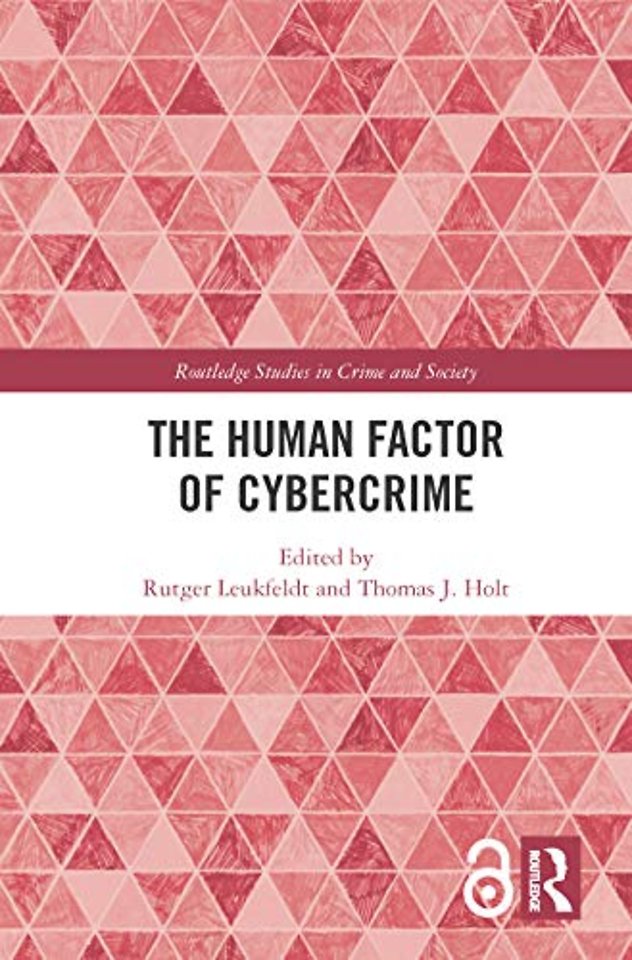The Human Factor of Cybercrime
Gebonden Engels 2019 1e druk 9781138624696Samenvatting
Cybercrimes are often viewed as technical offenses that require technical solutions, such as antivirus programs or automated intrusion detection tools. However, these crimes are committed by individuals or networks of people which prey upon human victims and are detected and prosecuted by criminal justice personnel. As a result, human decision-making plays a substantial role in the course of an offence, the justice response, and policymakers' attempts to legislate against these crimes.
This book focuses on the human factor in cybercrime: its offenders, victims, and parties involved in tackling cybercrime. The distinct nature of cybercrime has consequences for the entire spectrum of crime and raises myriad questions about the nature of offending and victimization. For example, are cybercriminals the same as traditional offenders, or are there new offender types with distinct characteristics and motives? What foreground and situational characteristics influence the decision-making process of offenders? Which personal and situational characteristics provide an increased or decreased risk of cybercrime victimization? This book brings together leading criminologists from around the world to consider these questions and examine all facets of victimization, offending, offender networks, and policy responses.
Specificaties
Lezersrecensies
Inhoudsopgave
1. It ain’t what it is, its the way that they do it? Why we still don’t understand cybercrime Mike McGuire
2. Contributions of Criminological Theory to the Understanding of Cybercrime Offending and Victimization Adam Bossler
3. The Open And Dark Web: Facilitating Cybercrime And Technology-Enabled Offenses Claudia Flamand and David Décary-Hétu
Part II: Victims
4. Predictors of Cybercrime Victimization: Causal Effects or Biased Associations? Steve van de Weijer
5. Virtual Danger: An Overview of Interpersonal Cybercrimes Jordana Navarro
6. Sexual Violence in Digital Society: Understanding the Human and Technosocial Factors Anastasia Powell, Asher Flynn and Nicola Henry
Part III: Offenders
7. Cybercrime subcultures: Contextualizing offenders and the nature of the offence Thomas J. Holt
8. On Social Engineering Kevin Steinmetz, Richard Goe, and Alexandra Pimentel
9. Contrasting cyber-dependent and traditional offenders: a comparison on criminological explanations and potential prevention methods Marleen Weulen Kranenbarg;
10. Financial cybercrimes and situational crime prevention Rutger Leukfeldt and Jurjen Jansen;
11. Modelling Cybercrime Development: The case of Vietnam Jonathan Lusthaus
12. Humanizing the Cybercriminal: Markets, Forums, and the Carding Subculture Craig Webber and Michael Yip
13. The Roles of ‘Old’ and ‘New’ Media Tools and Technologies in the Facilitation of Violent Extremism and Terrorism Ryan Scrivens and Maura Conway
14. Child Sex Abuse Images and Exploitation Materials Roderic Broadhurst
Part IV : Policing;
15. Policing Cybercrime: Responding to the Growing Problem and Considering Future Solutions Cassandra Dodge and George Burruss
16. Responding to individual fraud: Perspectives of the Fraud Justice Network Cassandra Cross
17. The Ecology of Cybercrime Benoît Dupont
18. Displacing big data: How criminals cheat the system Alice Hutchings, Sergio Pastrana and Richard Clayton
Anderen die dit boek kochten, kochten ook
Rubrieken
- advisering
- algemeen management
- coaching en trainen
- communicatie en media
- economie
- financieel management
- inkoop en logistiek
- internet en social media
- it-management / ict
- juridisch
- leiderschap
- marketing
- mens en maatschappij
- non-profit
- ondernemen
- organisatiekunde
- personal finance
- personeelsmanagement
- persoonlijke effectiviteit
- projectmanagement
- psychologie
- reclame en verkoop
- strategisch management
- verandermanagement
- werk en loopbaan







